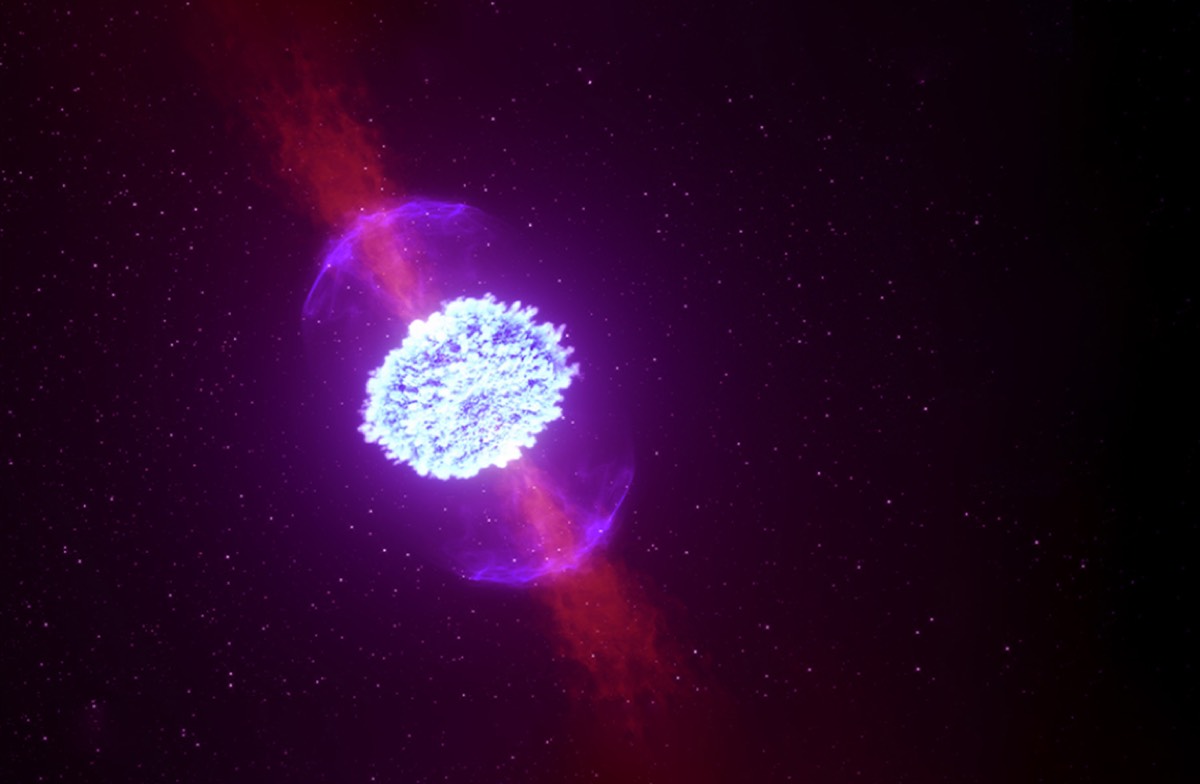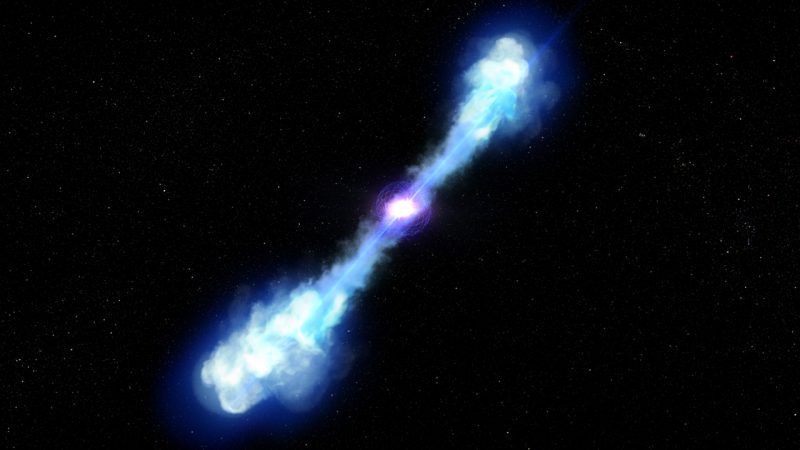
A year ago, astronomers discovered a powerful gamma-ray burst (GRB) lasting nearly two minutes, dubbed GRB 211211A. Now that unusual event is upending the long-standing assumption that longer GRBs are the distinctive signature of a massive star going supernova. Instead, two independent teams of scientists identified the source as a so-called "kilonova," triggered by the merger of two neutron stars, according to a new paper published in the journal Nature. Because neutron star mergers were assumed to only produce short GRBs, the discovery of a hybrid event involving a kilonova with a long GBR is quite surprising.
“This detection breaks our standard idea of gamma-ray bursts,” said co-author Eve Chase, a postdoc at Los Alamos National Laboratory. “We can no longer assume that all short-duration bursts come from neutron-star mergers, while long-duration bursts come from supernovae. We now realize that gamma-ray bursts are much harder to classify. This detection pushes our understanding of gamma-ray bursts to the limits.”
As we've reported previously, gamma-ray bursts are extremely high-energy explosions in distant galaxies lasting between mere milliseconds to several hours. The first gamma-ray bursts were observed in the late 1960s, thanks to the launching of the Vela satellites by the US. They were meant to detect telltale gamma-ray signatures of nuclear weapons tests in the wake of the 1963 Nuclear Test Ban Treaty with the Soviet Union. The US feared that the Soviets were conducting secret nuclear tests, violating the treaty. In July 1967, two of those satellites picked up a flash of gamma radiation that was clearly not the signature of a nuclear weapons test.
Just a couple of months ago, multiple space-based detectors picked up a powerful gamma-ray burst passing through our solar system, sending astronomers worldwide scrambling to train their telescopes on that part of the sky to collect vital data on the event and its afterglow. Dubbed GRB 221009A, it was the most powerful gamma-ray burst yet recorded and likely could be the "birth cry" of a new black hole.
There are two types of gamma-ray bursts: short and long. Classic short-term GRBs last less than two seconds, and they were previously thought to only occur from the merging of two ultra-dense objects, like binary neutron stars, producing an accompanying kilonova. Long GRBs can last anywhere from a few minutes to several hours and are thought to occur when a massive star goes supernova.

Astronomers at the Fermi and Swift telescopes simultaneously detected this latest gamma-ray burst last December and pinpointed the location in the constellation Boötes. That quick identification allowed other telescopes around the world to turn their attention to that sector, enabling them to catch the kilonova in its earliest stages. And it was remarkably nearby for a gamma-ray burst: about 1 billion light-years from Earth, compared to around 6 billion years for the average gamma-ray burst detected to date. (Light from the most distant GRB yet recorded traveled for some 13 billion years.)
“It was something we had never seen before,” said co-author Simone Dichiara, an astronomer at Penn State University and a member of the Swift team. “We knew it wasn’t associated with a supernova, the death of a massive star, because it was too close. It was a completely different kind of optical signal, one that we associate with a kilonova, the explosion triggered by colliding neutron stars.”
As two binary neutron stars begin circling into their death spiral, they send out powerful gravitational waves and strip neutron-rich matter from each other. Then the stars collide and merge, producing a hot cloud of debris that glows with light of multiple wavelengths. It's the neutron-rich debris that astronomers believe creates a kilonova's visible and infrared light—the glow is brighter in the infrared than in the visible spectrum, a distinctive signature of such an event that results from heavy elements in the ejecta which block visible light but lets the infrared through.

That signature is what subsequent analysis of GRB211211A revealed. And since the subsequent decay of a neutron star merger produces heavy elements like gold and platinum, astronomers now have a new means of studying how these heavy elements form in our universe.
Several years ago, the late astrophysicist Neil Gehrels suggested that longer gamma-ray bursts could be produced by neutron star mergers. It seems only fitting that NASA's Swift Observatory, which is named in his honor, played a key role in the discovery of GRB 211211A and the first direct evidence for that connection.
“This discovery is a clear reminder that the Universe is never fully figured out,” said co-author Jillian Rastinejad, a Ph.D. student at Northwestern University. “Astronomers often take it for granted that the origins of GRBs can be identified by how long the GRBs are, but this discovery shows us there’s still much more to understand about these amazing events.”
DOI: Nature, 2022. 10.1038/s41550-022-01819-4 (About DOIs).



3175x175(CURRENT).thumb.jpg.b05acc060982b36f5891ba728e6d953c.jpg)

Recommended Comments
There are no comments to display.
Join the conversation
You can post now and register later. If you have an account, sign in now to post with your account.
Note: Your post will require moderator approval before it will be visible.